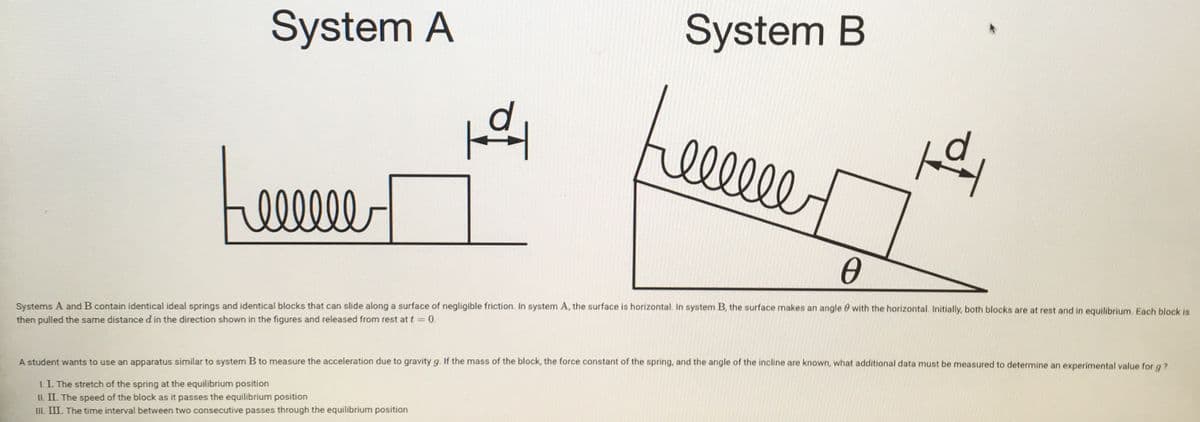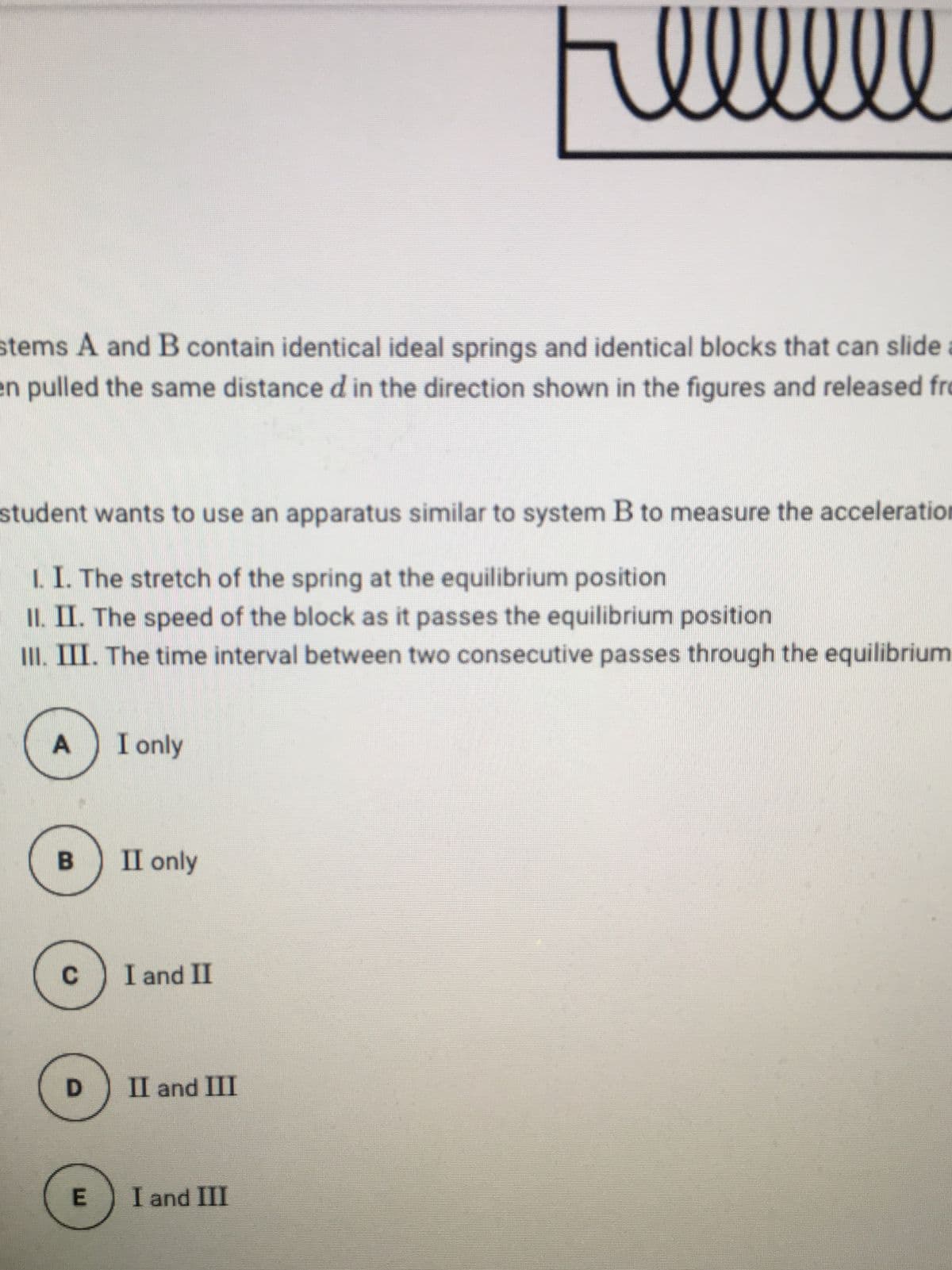System A System B 의 heee ellel Systems A and B contain identical ideal springs and identical blocks that can slide along a surface of negligible friction. In system A, the surface is horizontal. In system B, the surface makes an angle e with the horizontal. Initially, both blocks are at rest and in equilbrium Each block then pulled the same distance d in the direction shown in the figures and released from rest at t=0 A student wants to use an apparatus similar to system B to measure the acceleration due to gravity g. If the mass of the block, the force constant of the spring, and the angle of the incline are known, what additional data must be measured to determine an experimental value for o? 11. The stretch of the spring at the equilibrium position L. IL The speed of the block as it passes the equilibrium position
System A System B 의 heee ellel Systems A and B contain identical ideal springs and identical blocks that can slide along a surface of negligible friction. In system A, the surface is horizontal. In system B, the surface makes an angle e with the horizontal. Initially, both blocks are at rest and in equilbrium Each block then pulled the same distance d in the direction shown in the figures and released from rest at t=0 A student wants to use an apparatus similar to system B to measure the acceleration due to gravity g. If the mass of the block, the force constant of the spring, and the angle of the incline are known, what additional data must be measured to determine an experimental value for o? 11. The stretch of the spring at the equilibrium position L. IL The speed of the block as it passes the equilibrium position
Related questions
Question

Transcribed Image Text:System A
System B
llll
heeeee
elll
Systems A and B contain identical ideal springs and identical blocks that can slide along a surface of negligible friction. In system A, the surface is horizontal. In system B, the surface makes an angle 0 with the horizontal. Initially, both blocks are at rest and in equilibrium. Each block is
then pulled the same distance d in the direction shown in the figures and released from rest at t = 0.
A student wants to use an apparatus similar to system B to measure the acceleration due to gravity g. If the mass of the block, the force constant of the spring, and the angle of the incline are known, what additional data must be measured to determine an experimental value for g ?
1. I. The stretch of the spring at the equilibrium position
II. II. The speed of the block as ít passes the equilibrium position
III. III. The time interval between two consecutive passes through the equilibrium position

Transcribed Image Text:ell
stems A and B contain identical ideal springs and identical blocks that can slide
en pulled the same distance d in the direction shown in the figures and released fro
student wants to use an apparatus similar to system B to measure the acceleration
I. I. The stretch of the spring at the equilibrium position
II. II. The speed of the block as it passes the equilibrium position
III. III. The time interval between two consecutive passes through the equilibrium
I only
II only
I and II
II and III
I and III
A,
D.
Expert Solution
This question has been solved!
Explore an expertly crafted, step-by-step solution for a thorough understanding of key concepts.
This is a popular solution!
Trending now
This is a popular solution!
Step by step
Solved in 3 steps
